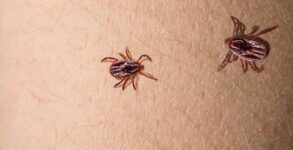Researchers have identified a key factor as to why Covid-19 appears to infect and sicken adults and older people preferentially while seeming to spare younger children.
Children have lower levels of an enzyme/co-receptor that SARS-CoV-2, the virus that causes Covid-19, needs to invade airway epithelial cells in the lung.
The findings, published today in the Journal of Clinical Investigation, support efforts to block the enzyme to potentially treat or prevent Covid-19 in older people.
“Our study provides a biologic rationale for why particularly infants and very young children seem to be less likely to either get infected or to have severe disease symptoms,” said Jennifer Sucre, Assistant Professor of Pediatrics at Vanderbilt University Medical Center (VUMC), Nashville, US.
There is still much to learn about SARS-CoV-2. But this much is known: After a viral particle is inhaled into the lungs, protein “spikes” that stick out like nail studs in a soccer ball attach to ACE2, a receptor on the surfaces of certain lung cells.
A cellular enzyme called TMPRSS2 chops up the spike protein, enabling the virus to fuse into the cell membrane and “break into” the cell. Once inside, the virus hijacks the cell’s genetic machinery to make copies of its RNA.
Sucre who led the research with Jonathan Kropski, Assistant Professor of Medicine at VUMC, wondered if TMPRSS2 had something to do with the greater severity of Covid-19 symptoms observed in older people compared to children.
“Our research has always focused on understanding lung development and how infant lungs differ from adult lungs in their vulnerability to injury,” Sucre said.
“In this study we actually took the opposite approach, and were able to see how the developing lung by its differences is protected from SARS-CoV-2 infection.”
The researchers built a dataset on lung development in the mouse using a technique called single-cell RNA-sequencing.
The technique can detect the expression of genes in individual cells of tissues such as the lung. In this way the researchers were able to track the expression of genes known to be involved in the body’s response to Covid-19 over time.
They found that while the gene for ACE2 was expressed at low levels in the mouse lung, “TMPRSS2 stood out as having a really striking trajectory of increased expression during development,” Schuler said.
With the help of VUMC pathologists, the researchers obtained and analysed human lung specimens collected from donors of different ages, and confirmed a similar trajectory in TMPRSS2 expression to what they’d found in mice.
“What we found is that expression of (TMPRSS2) goes up significantly with aging, and we see that at the level of the gene and at the level of the protein,” Sucre said.
“We see a lot more TMPRSS2 in older individuals, in both humans and mice.”
–IANS


















